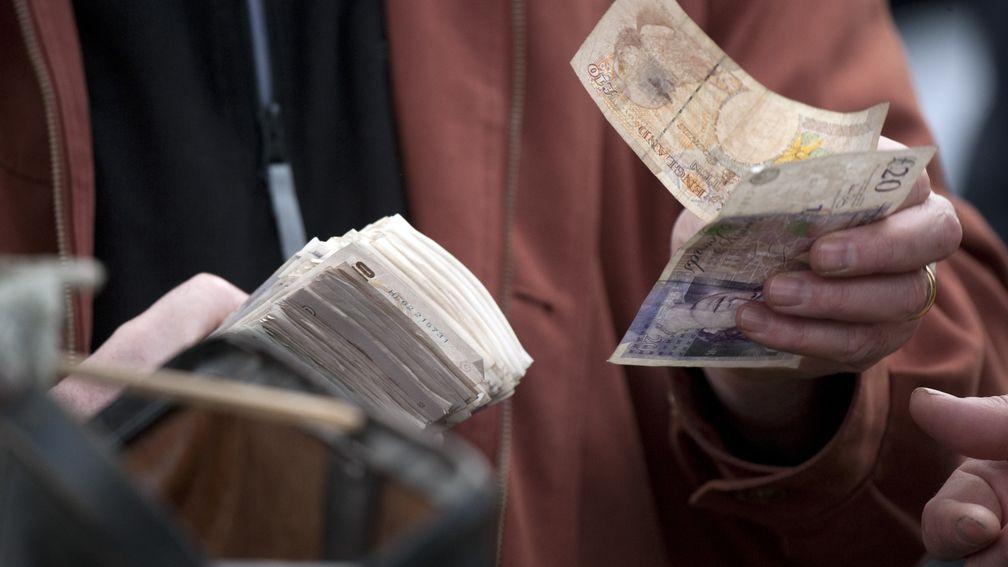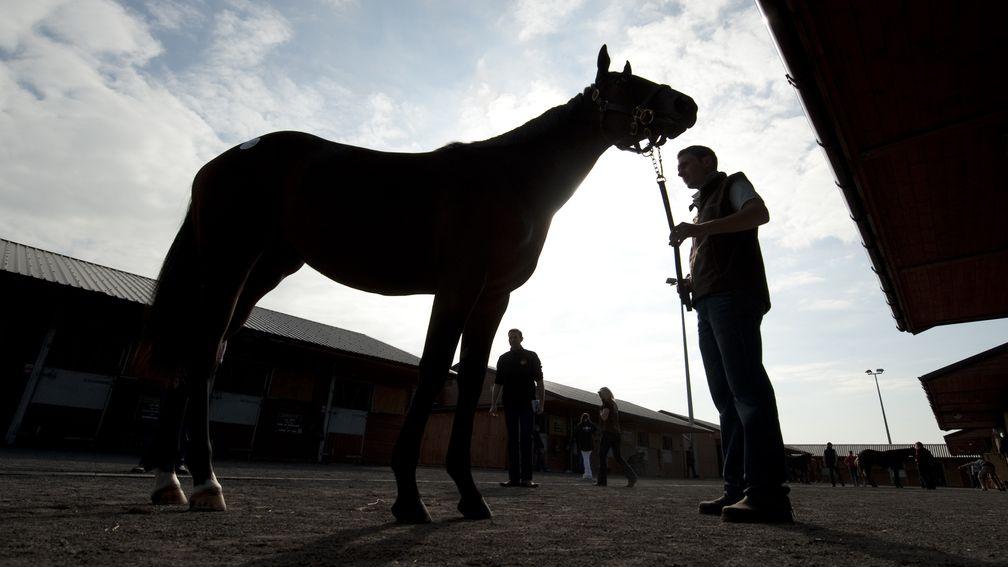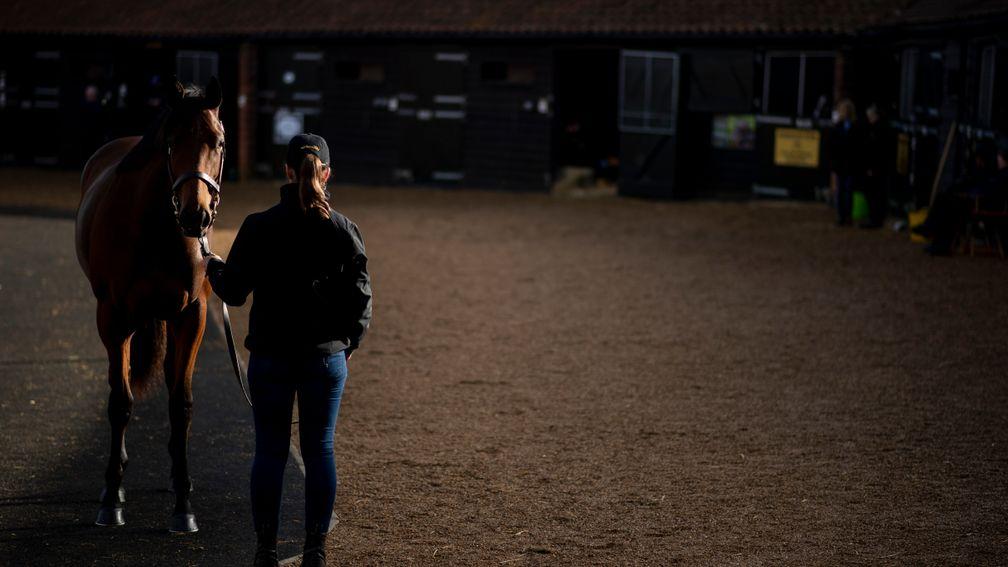'Bad apples' engaged in improper and unlawful practices: what the review says

The 83-page bloodstock review can be read in full here. Below are some of the key passages.
First, in the executive summary the review's project leader Justin Felice details how the report team came to the conclusion that while the the vast majority of those working in the bloodstock industry conduct themselves with high integrity, unethical practices are well known and carry few consequences.
8. The Review found that the bloodstock industry was generally a safe environment in which to buy and sell bloodstock and the vast majority of industry participants appear to display high standards of integrity.
9. However, the interviewee feedback also revealed a widespread knowledge and acknowledgement of unethical practices being conducted with relative impunity in the bloodstock industry for many years, with a small number of unscrupulous individuals being identified repeatedly by different interviewees as people who pose a real risk to the integrity and reputation of the entire bloodstock industry. A considerable number of interviewees alleged that they had themselves been (or had direct knowledge of others having been) victims of such practices, including many different allegations of improper inducements and payments. On some occasions these practices, as explained below, are also unlawful.
10. Whilst the Review Team was not required to investigate any of the specific allegations made by the interviewees (and did not have the time nor resources to do so in any event), there was sufficient weight of credible testimony and corroboration of individual allegations to leave me in no doubt whatsoever that the concerns and findings in this Report are fair and justified.
11. Many participants spoke freely about their experience and/or knowledge of unethical practices in the bloodstock sales industry and the need for greater integrity, transparency and accountability, failing which the bloodstock industry was at serious risk of being publicly exposed by investigative media and/or those who have fallen victim to some of the improper practices which were cited. It was widely acknowledged that any such exposure would be likely to seriously damage the bloodstock industry’s reputation.
12. Whilst the bloodstock industry currently purports to self-regulate through the Bloodstock Industry Code of Practice dated 1 January 2009, there was a considerable volume of testimony provided by interviewees of alleged breaches of the Code, primarily by “Agents” (as broadly defined under the Code), but also by other participants in the bloodstock sales process. There was some consensus amongst the interviewees that approximately 5% of Agents were “bad apples”, but that the rest largely conducted themselves with integrity when conducting their agency activities.
13. Many of these breaches constitute not only breaches of the Code, but also breaches of related agent/fiduciary legal duties, and in some cases potentially breaches of applicable criminal legislation (including one or more of the Bribery Act 2010, the Fraud Act 2006 and the Criminal Law Act 1977) and the tort of unlawful means conspiracy.
14. The unethical and/or unlawful practices which appear to be most prevalent are:
14.1. Secret Profiteering, being the collusion between two parties to make a secret profit through the sales process – usually, but not exclusively, the vendor on the one hand and the Agent for the purchaser on the other.
14.2. Dual Representation/Commission, where the Agent acts for both the purchaser and the vendor in the same transaction and charges commission to both parties (without one or both parties’ knowledge).
14.3. Luck Money, an anachronistic practice whereby the Agent for the purchaser demands and receives money (in some cases, a substantial sum calculated as a percentage of the sale price) from the vendor on the sale of a horse.
14.4. Bidding Up, being the artificial increase in the sale price of a horse at auction through a series of pre-agreed bidding where the pre-agreement leads to the purchaser paying more for the horse than he/she would have done, but for the pre-agreement, such practice being of particular ethical concern where it leads to bidding up beyond the reserve price.
Later, the report notes that no complaints have been recorded in the 15 years since the bloodstock industry introduced a code of practice in 2004.
17. It also became clear that there was a pressing need to change and modernise the culture of the bloodstock industry in a way which stops unethical and/or unlawful conduct being “normalised” and ultimately condoned. A united front across all the various industry stakeholder groups is, in our view, needed to change the current behaviours and culture.

18. This need for greater industry unity was reinforced by my disappointment at discovering that industry participants preferred to avoid reporting allegations of wrongdoing within the bloodstock industry with a real fear expressed by some participants of being ostracised from being able to operate within the industry, including not being able to buy and sell bloodstock, should they do so. There is no clearer manifestation of this than the fact that no complaints appear to have been recorded in the 15-year period since the initial inception of the Code in 2004.
19. There can be no doubt that the self-regulatory model agreed in the amended Code in 2009 is not fit for purpose and requires urgent attention and overhaul. Put simply, the bloodstock industry is not being regulated in any meaningful way as it currently stands and there was a surprisingly widespread lack of knowledge that the Code even existed. This is not an acceptable or sustainable state of affairs.
The report also notes that the bloodstock industry is united behind addressing allegations of unethical behaviour.
25. On a positive note, there does appear to be near-universal support for an industry-wide effort to create a zero-tolerance culture towards allegations of unethical and/or unlawful behaviour in the bloodstock industry, which reinforces my belief that now is the time to act. The recommendations proposed in this Report have been presented to key industry stakeholders, who have been positive in their feedback, with no objections being raised to the nature of the recommendations.
Later, the report's findings of the review section details starkly divergent views among interviewees on the cleanliness of the industry.
14. At the more positive end of the spectrum, one Agent described the integrity of the bloodstock industry as “surprisingly high” with another stating that they came across “very little skulduggery”. One breeder commented that they had never been approached to do “anything untoward”, whilst another thought that “the industry is cleaner than the perception”. One trainer stated that he had “never been offered any deals” and another confirmed that he had “never had a problem with the British sales houses”. A comment from a Sales House was that “the vast majority of people are scrupulous and honest”, whilst one owner noted (by way of markedly faint praise) that the industry is not “overly fraudulent”.

15. There was however considerably more in the way of negative feedback. Numerous individuals commented about the lack of integrity in the bloodstock industry, with one breeder stating that the “level of corruption is widespread but it is hard to prove as crooked vendors will not want to expose crooked bloodstock agents” and another stating that “it would be ridiculous to say nothing was corrupt in the industry” since it was “industry practice to break [the rules]”. Another breeder described the industry as “a dinosaur and has to change”. An owner stated that the “more you learn the more concerned you become” with another stating that “corruption is rife at sales” and one industry observer commenting that the “scale of dishonesty, amounting in some cases to straightforward theft, has been eye-watering”. A Sales House acknowledged that “the fact that we’re having this conversation means that there is something wrong” and “it is the culture which needs to change”.
Some of the report's strongest language is found in the section relating to bloodstock agents, a part of the industry in which a small minority of "bad apples" prompted serious concerns among interviewees.
26. Agents themselves typically asserted to the Review Team that “most agents are compliant with the Bloodstock Industry Code of Practice” and that “any perceived issues are being driven by a small minority to the detriment of everyone else”. Some breeders and trainers suggested that “there are some honourable agents out there” and that the Agents that they used were “of the highest integrity” and “without any issues”. A common element of the feedback was that only a small percentage of Agents were acting inappropriately, but they were doing so repeatedly. For example, one Agent said that “95% of those who act as an agent do so with the client’s best interests in mind”. A breeder/trainer agreed stating that “it’s only the 5% that are bad apples”, whilst an owner expressed his perception that “95% of agents are probably straight”.
27. However, the strength of view and feeling amongst the interviewees about the “bad apple” Agents was considerable. A significant number of breeders and/or trainers made highly critical comments around the behaviour of the small proportion of “bad apple” Agents describing them as “beyond unethical”, that they “sometimes don’t raise concerns to the principal”, Agents are “working for both sides of the transaction” and that “time and time again, agents will come up to you and ask, ‘how are we fixed?’”. One trainer said that there are “2-3 agents that I wouldn’t go near”. One owner referred to “agents and vendors colluding to split the commission” and another to “agents buying a yearling because they had an interest in it” without appropriate disclosure. A number of interviewees suggested that it was a risk, as one owner put it, to “let your bloodstock agent know how much you have to spend” for fear of being taken advantage of. Agents themselves even acknowledged failings of their fellow Agents. One stated that there is “bullying” from some Agents who “require buyers to pay certain amounts for horses” and another noted that “5% of agents take a short-term view of the client and seek to manipulate the system to suit them rather than the client”.
The report goes into detail about some of the improper practices alleged to be taking place previously mentioned in the executive summary. Secret profiteering, the report finds, is not "endemic" but is an issue of "considerable concern", since it may amount to a criminal offence. One example of the activity is cited.
An Agent who was contracted by a racing syndicate to purchase horses on their behalf also received payments from consignors for any horses sold to that syndicate. The Agent did not disclose to the syndicate its receipt of payments from the consignors. The funds were hidden in another individual’s bank account and amounted to a seven-figure sum.
Examples of dual representation, luck money and bidding up are also given.
The purchaser acquired a horse privately, with the same Agent acting for both the purchaser and the vendor (an arrangement which the purchaser had consented to). The purchaser paid a considerable sum to the vendor. At a later date, the purchaser spoke to the vendor and found out that the Agent had received around a third of the price paid for the horse from the vendor. This payment had not been revealed to the purchaser by the Agent.
. . . . .
A breeder at a stud farm reluctantly agreed to give 5% of the sale proceeds of horses to Agents, who had asked for Luck Money if the clients of the Agents purchased his horses. These payments were given to the Agents in cash. On another later occasion, the breeder asked for receipts before paying any Luck Money, but his requests were ignored and when he insisted on receipts, the Agents appeared to shun him, and he suddenly for the first time experienced considerable difficulties in securing sales, which was unusual on the basis of his sales numbers in previous years. The breeder firmly believes that the Agents were influencing other industry participants against him due to him not paying Luck Money to the Agents.
. . . .
The interviewee learnt of a horse that was to be sold at auction whose price has been fixed two days before the sale. The horse was ultimately sold for a very significant six-figure amount and the bidding showed that two individuals were involved in bidding-up the sale price to the pre-agreed price. Both individuals have a high profile within the industry and, in this example, were the vendor and the Agent for the purchaser. The purchaser in this particular case confirmed to the Review Team that the horse had substantial health issues which had prevented it from being run at all and alleged that he had received no advice from the Agent about any veterinary concerns and was highly suspicious of his conduct. The purchaser has never used the Agent again.
However, the report again stresses that there is no suggestion corruption is "systemic" in the industry.
101. The Review Team does however want to be clear that it has not found there to be systemic corruption across the bloodstock industry. Whilst there are significant issues that need to be urgently addressed, the problems within the bloodstock industry are primarily caused by a small, but significant, minority of industry participants who behave unethically and, in some cases, criminally.

The Findings section then concludes with a challenge to the industry: will you change?
111. The Review Team very much hopes that the findings and recommendations of this Report act as the catalyst for the meaningful change that the bloodstock industry plainly needs.
112. The majority of interviewees accept that there is an unacceptable level of unethical behaviour taking place within the bloodstock industry. The findings made in this Section result in the clear and unarguable conclusion that this status quo is not sustainable.
113. The Review Team believes that its findings offer a fair and accurate account of the industry. They may not make comfortable reading for the bloodstock industry, but they demonstrate that there is a compelling need for a new and effective regulatory approach for the bloodstock industry.
114. The bloodstock industry is at a crossroads. It can either collectively grasp the opportunity that this Review affords to achieve transformational change or continue to turn a blind eye to concerning practices which, at some point, will cause the industry significant damage. As one of the Sales Houses remarked, “we need to change what is deemed as acceptable and what isn’t”.
Read The Lowdown from 8.30am daily on racingpost.com and the Racing Post app for all the day's going updates, news and tips
Published on 19 December 2019inNews
Last updated 07:30, 20 December 2019
- Arqana announces appointment of Thomas Huet as consultant
- 'We think she's quite good' - excellent week for Study Of Man continues with Newbury winner Sinology
- Oppenheimer's Dubawi half-sister to Tattersalls Book 1 sale topper set for Newbury debut on Friday
- Bolsena adds to impressive legacy of Reem Three with Newmarket romp
- Initial entries for the Tattersalls Cheltenham April Sale unveiled
- Arqana announces appointment of Thomas Huet as consultant
- 'We think she's quite good' - excellent week for Study Of Man continues with Newbury winner Sinology
- Oppenheimer's Dubawi half-sister to Tattersalls Book 1 sale topper set for Newbury debut on Friday
- Bolsena adds to impressive legacy of Reem Three with Newmarket romp
- Initial entries for the Tattersalls Cheltenham April Sale unveiled